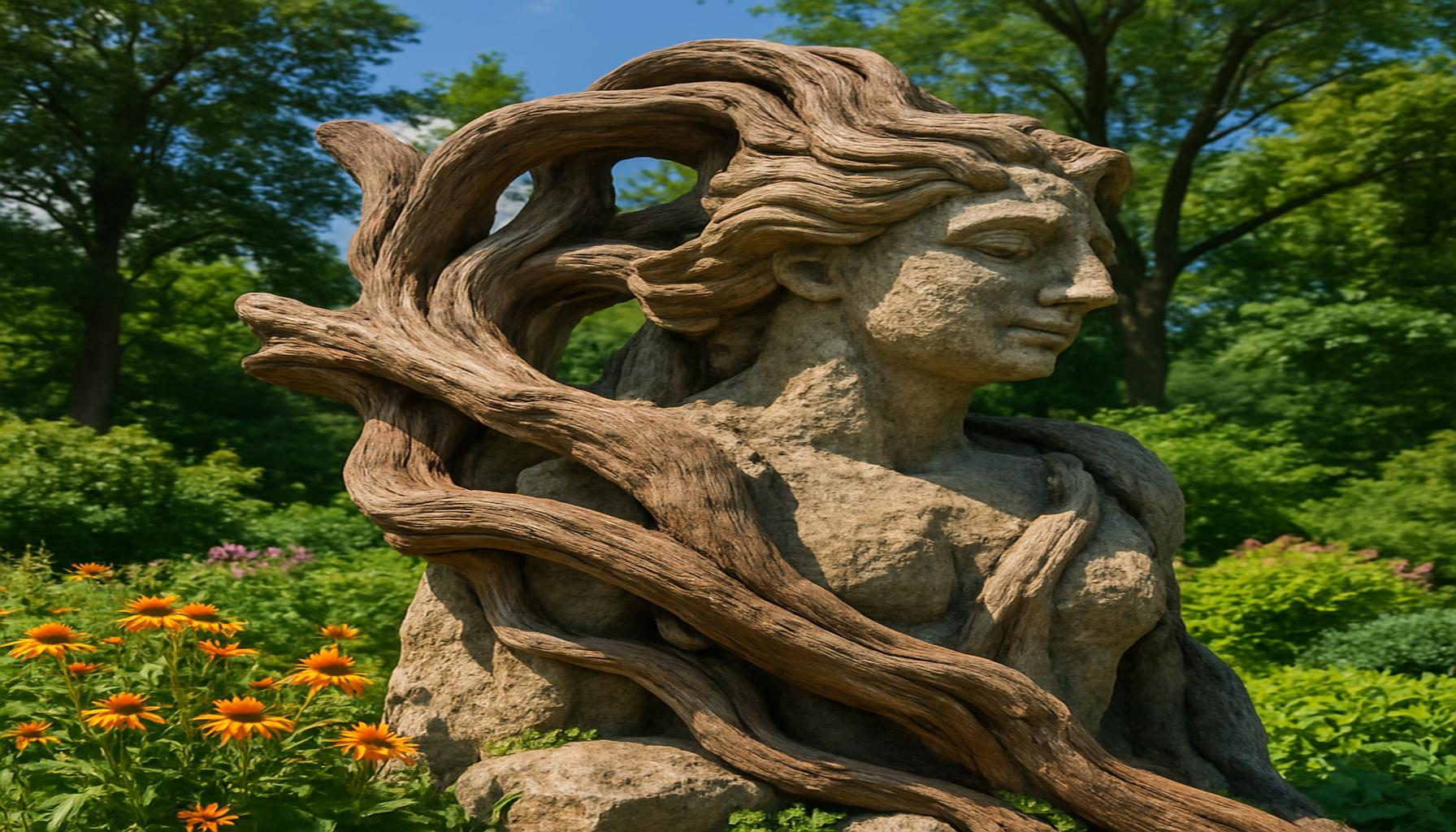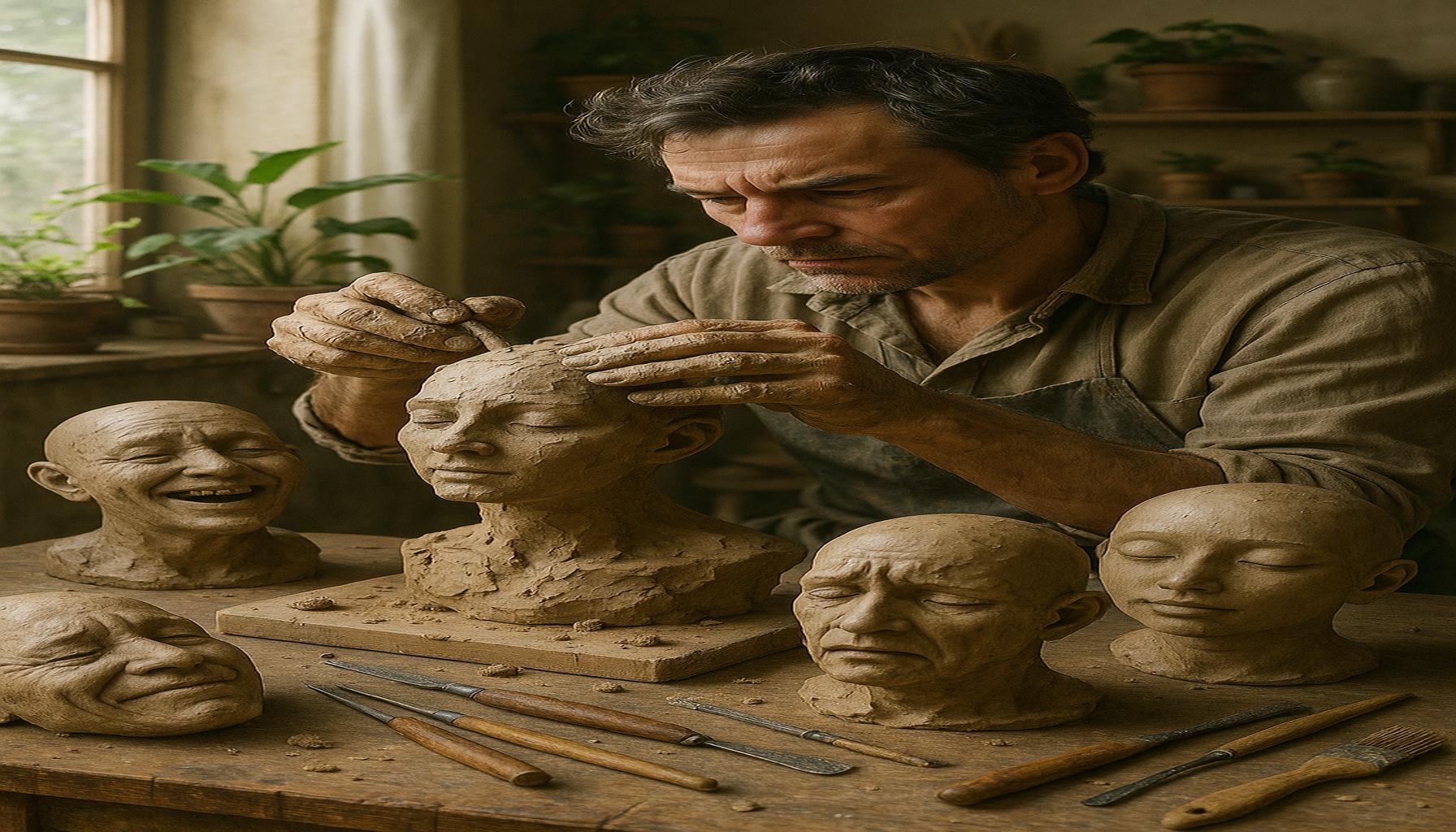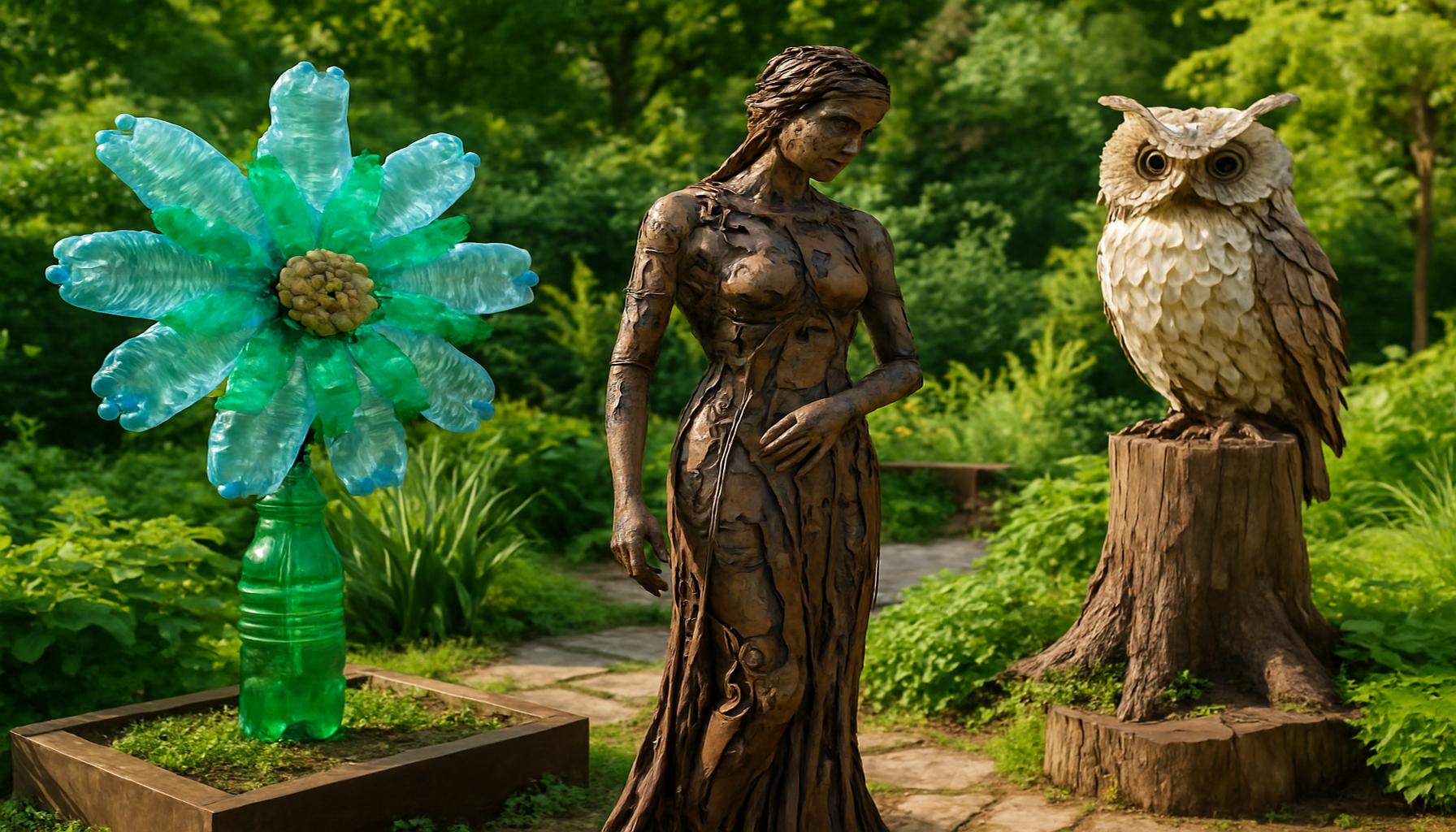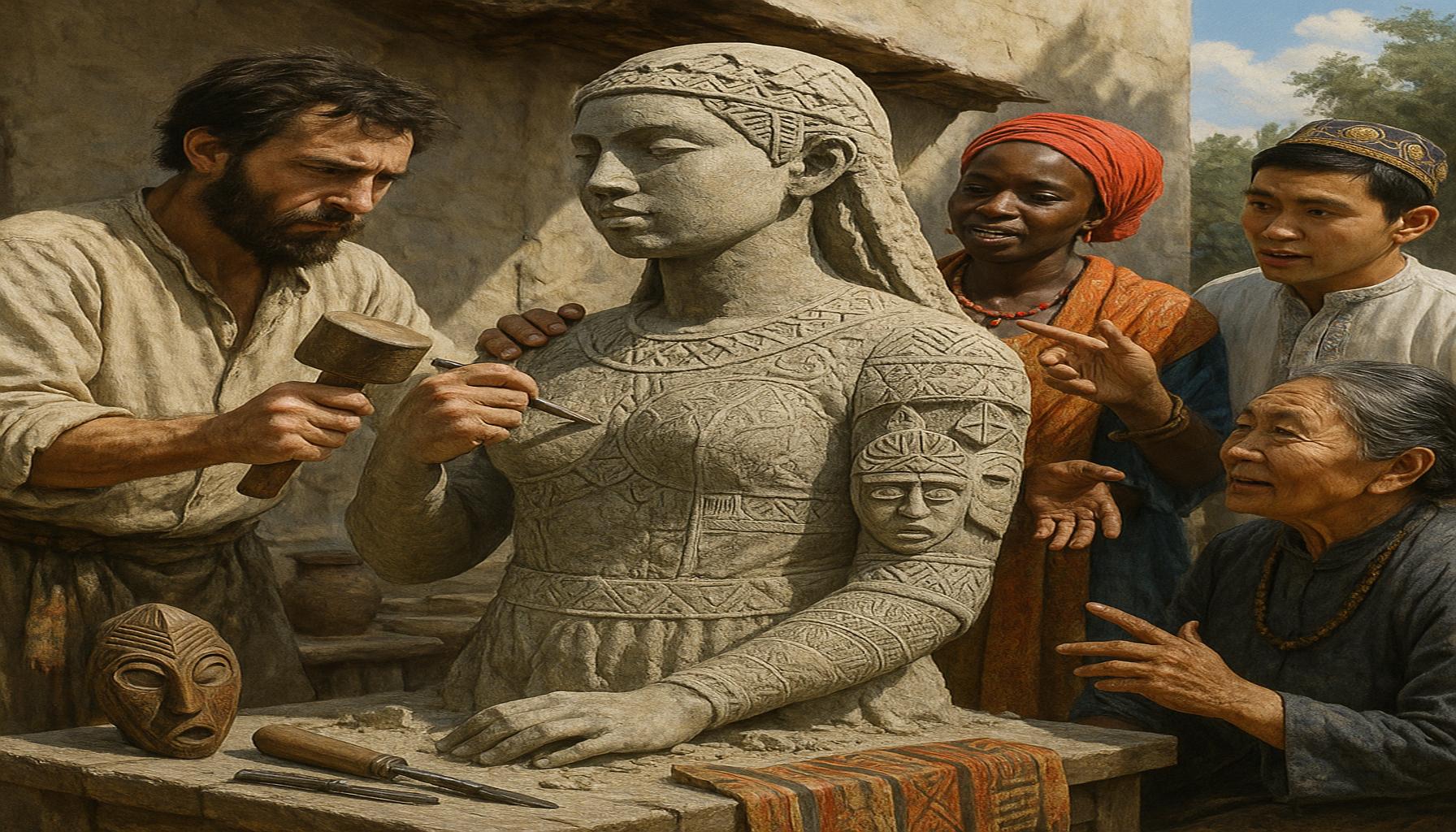Sculpture and Nature: Integrating Art and Environment in Outdoor Projects

Connecting Artistic Expression with the Natural World
Art has always had a profound relationship with nature, but the integration of sculpture into outdoor environments presents a unique opportunity for exploration and reflection. In a world increasingly disconnected from the outdoors, these projects serve as a bridge between humanity and the natural landscape. They invite us to reconsider our connection with the environment, offering a chance to pause, reflect, and engage with the art that surrounds us.
Key Features of Outdoor Sculpture Projects
- Site-Specific Design: Artists design sculptures that enhance and complement the existing landscape. This means that the dimensions, materials, and forms of these artworks are often influenced by their surroundings. For instance, the massive stone installations at Land Art sites such as Robert Smithson’s Spiral Jetty in Utah engage directly with the environment, drawing attention to the salt flats and geology of the Great Salt Lake.
- Ecological Awareness: Many artists incorporate sustainable materials and practices, promoting environmental stewardship. For example, renowned artist Andy Goldsworthy utilizes natural elements like leaves, stones, and twigs to create his ephemeral works that underscore the transient beauty of nature, encouraging viewers to appreciate the fleeting moments within the landscape.
- Cultural Impact: Outdoor sculptures can resonate with local history and culture, creating a sense of community. In San Francisco, the Embarcadero is adorned with works that reflect the city’s maritime heritage, fostering a stronger identity among the residents. Such pieces not only beautify the area but also encourage public dialogue about the region’s historical narratives.
From urban parks to rural settings, outdoor sculptures engage viewers in interactive experiences. They transform mundane environments into engaging spaces, prompting us to explore both the artwork and the surroundings. Notable examples, such as the Storm King Art Center in New York, showcase how art can harmoniously coexist with nature. Here, vast fields display works from a multitude of artists, creating an immersive landscape where art and the natural world intertwine.
Invitation to Explore
This intersection of art and nature not only beautifies spaces but also encourages conversations about sustainability, creativity, and community dynamics. As we delve into various outdoor projects, let’s uncover how these masterpieces forge a deeper appreciation of our environment. The experience of discovering outdoor sculptures can also promote mindfulness, encouraging us to step away from our screens and immerse ourselves in the tactile reality of our surroundings. We invite you to explore your local parks, gardens, and public spaces to discover how art continues to inspire connections to nature and each other, fostering a greater appreciation for the landscapes we inhabit.
DISCOVER MORE: Click here to learn about the benefits of art therapy
The Transformative Power of Outdoor Sculpture
Outdoor sculpture projects inherently possess the capacity to transform landscapes, making them not just places to visit, but experiences to be lived. As sculptures integrate into the natural environment, they enhance the viewer’s perceptual relationship with both the artwork and its surroundings. Through a variety of forms, materials, and aesthetics, these works invite contemplation and inspire a deeper connection to the natural world.

Elements Influencing Artistic Integration
The creation of outdoor sculptures is underpinned by several core elements that guide artists in their quest to marry art with nature. These elements include:
- Natural Context: Artists carefully consider the existing flora, fauna, and terrain when designing their sculptures. The John Anderson sculpture on the shores of Lake Michigan, for instance, not only mirrors the undulating waves but also enhances the lakeshore’s natural beauty with its fluid, organic form.
- Material Selection: The choice of materials is crucial. Many artists prioritize sustainable or locally sourced materials to minimize their environmental footprint. For example, Ruth Asawa utilized wire to create works that intertwine seamlessly with the environment, showcasing the beauty of form while remaining conscious of sustainability.
- Interactive Elements: Some outdoor sculptures encourage engagement through interactivity. Projects like the Big Rig Jig in Las Vegas use repurposed materials to create playable installations, where viewers are not just spectators, but active participants in the art. This interplay fosters a unique community connection, enhancing the cultural fabric of the area.
Beyond just aesthetic appeal, outdoor sculptures often serve as educational tools, educating the public about environmental issues while prompting dialogue on the role of art in society. This dual function is especially relevant in today’s conversation about climate change, as many artists create pieces that provoke thought and inspire action. Take, for example, the Giant’s Causeway inspired installations in Ireland, which highlight the urgency of protecting coastal ecosystems while simultaneously showcasing artistic innovation. These sculptures draw attention to both the fragility of the environment and the necessity of creative expression.
Art as a Catalyst for Sustainable Change
The integration of sculpture into outdoor spaces represents more than just a convergence of art and nature—it symbolizes a proactive approach toward environmental consciousness. Projects such as the High Line in New York City have revitalized disused urban spaces, illustrating how art can lead to greener urban environments and engender community pride. By transforming neglected areas into vibrant public spaces filled with artistic expression, both residents and visitors are encouraged to engage more deeply with their environment.
As we continue to explore the relationship between sculpture and nature, we uncover how these creations challenge perceptions, provoke thought, and foster a sense of place. The journey of discovering these artistic endeavors not only enhances our appreciation for the surroundings but also enriches our cultural landscape, intertwining art with the heart of nature.
| Category | Description |
|---|---|
| Aesthetic Enhancement | Integrating sculpture within nature enhances the visual appeal of outdoor spaces, creating captivating environments. |
| Environmental Awareness | Sculptures can convey messages about sustainability and conservation, promoting a deeper connection to the environment. |
| Community Engagement | Outdoor art projects can foster a sense of community pride and participation, inviting locals to take an active role. |
| Educational Opportunities | Sculptures in natural settings serve as tools for education, providing information about local flora, fauna, and ecological practices. |
The integration of art and the natural environment in outdoor projects creates a unique opportunity for community engagement, education, and aesthetic enhancement. From the visual appeal that sculptures provide to their role in raising environmental awareness, these projects become lively dialogue between art and nature, inviting deeper reflection on our surroundings. Each sculpture serves not merely as an object but as a reflection of cultural identity and respect for nature. This intersection of creativity and landscape can significantly impact social dynamics, encouraging community pride and participation while highlighting the importance of sustainable practices. By examining these complex interrelations, we can enhance our understanding of how art can transform living spaces into immersive experiences.
DISCOVER MORE: Click here for insights on creative writing and mental wellness
Forging Community Connections through Outdoor Art
One of the remarkable byproducts of integrating sculpture into outdoor environments is the fostering of community connections. Outdoor art becomes a point of convergence where neighbors, tourists, and art enthusiasts converge, creating shared experiences that can bolster community identity. The sculptural installations often reflect the cultural narratives of the area, echoing local histories and celebrating regional identities.
Community Engagement and Participation
Many outdoor sculpture projects prioritize public engagement, blurring the lines between artist and audience. Programs such as Chicago’s “Sculpture in the Parks” encourage local communities to participate in the process of creation, enabling residents to contribute ideas or even collaborate on sculptures. This involvement not only cultivates a sense of ownership but also invites diverse perspectives to shape the narrative of public spaces.
The Asheville Sculpture Walk in North Carolina represents another inspiring example where local artists display their work alongside community stakeholders. Throughout the year, residents can vote on their favorite sculptures which in turn infuses the project with local flavor, transforming the outdoor gallery into an evolving expression of the community’s preferences. Such initiatives underline the role of art as a civic catalyst, strengthening neighborhood ties through shared aesthetic experiences.
The Role of Education and Awareness
Additionally, public art installations serve educational purposes that go hand in hand with the aesthetic appeal. Many outdoor sculptures convey vital messages regarding sustainability and conservation. The Earthship Biotecture project in Taos, New Mexico, utilizes sculptural forms as teaching tools for sustainable living practices. Directly illustrating the principles of eco-friendly construction, these sculptural habitats enable visitors to learn about environmentally responsible lifestyle choices while interacting with the art.
Sculptors such as David Brooks are also pioneering projects like “The Pluck Project,” where installations encourage community involvement and discussions about local climate issues and ecological awareness. By integrating art into environmental discourse, these initiatives elevate community engagement, deepening residents’ relationships with both their local cultures and the greater environment.
Experiential Learning Through Artistic Interaction
The fusion of art and environment in outdoor projects also creates opportunities for experiential learning. Art becomes a medium through which people can connect with science, history, and local ecosystems. The Storm King Art Center in New York State features large-scale sculptures that interact with the undulating terrain and seasonal changes, offering visitors a chance to experience nature’s rhythms alongside artistic innovation.
Participatory installations, such as those introduced by the Fallen Fruit collective, encourage attendees to engage directly with nature while creating interactions around food sustainability. By inviting communities to create public fruit orchards, they demonstrate how art can directly contribute to environmental consciousness and food access, utilizing sculpture both as a literal and metaphorical platform for discussion.
The interweaving of art, community, and environment is marked by a collaborative spirit, influencing perceptions and inspiring further exploration. Through outdoor sculptures, the boundaries of artistic expression expand, elevating public awareness and invigorating local identities.
DISCOVER MORE: Click here to enhance your well-being
Conclusion: Art as a Nexus Between Sculpture and Nature
In summary, the interplay of sculpture and nature in outdoor projects presents a compelling opportunity to foster community engagement, provoke dialogue about environmental issues, and enhance the aesthetic landscape. As we have explored, projects like Chicago’s “Sculpture in the Parks” and the Asheville Sculpture Walk not only celebrate local culture but also invite residents to contribute to their artistic environment, creating instances of shared ownership and pride. These public spaces serve as a canvas reflecting the values and narratives of the communities they represent.
Moreover, educational initiatives through art, exemplified by The Earthship Biotecture in Taos and David Brooks’ “The Pluck Project,” illuminate pressing issues of sustainability and climate change. By blending artistic expression with ecological awareness, these projects elevate the public’s understanding and relationship with both art and the environment. The experiential learning opportunities provided by venues such as The Storm King Art Center further embody this fusion, allowing visitors not only to appreciate sculptures but to engage deeply with nature itself.
Ultimately, the integration of sculpture into outdoor environments transcends mere decoration; it operates as a nexus of cultural expression, environmental stewardship, and communal engagement. As communities increasingly embrace outdoor art, the potential to inspire a collective consciousness around sustainability and identity continues to grow. As we look ahead, the challenge will be to sustain these connections, ensuring that the dialogue between art and nature not only persists but thrives, propelling communities toward a more sustainable and vibrant future.



